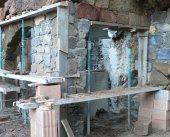




![Filename: rocket-stove.jpg
Description: [Thumbnail for rocket-stove.jpg]](/t/52684/a/35145/rocket-stove.jpg)




How permies.com works
What is a Mother Tree ?





Burra Maluca wrote:What are the tubes made of? Metal is going to burn out at the temperatures a rocket stove will reach.
God of procrastination https://www.youtube.com/watch?v=q1EoT9sedqY
 1
1




Success has a Thousand Fathers , Failure is an Orphan
LOOK AT THE " SIMILAR THREADS " BELOW !




 1
1














Success has a Thousand Fathers , Failure is an Orphan
LOOK AT THE " SIMILAR THREADS " BELOW !


















Success has a Thousand Fathers , Failure is an Orphan
LOOK AT THE " SIMILAR THREADS " BELOW !














 1
1














Success has a Thousand Fathers , Failure is an Orphan
LOOK AT THE " SIMILAR THREADS " BELOW !










God of procrastination https://www.youtube.com/watch?v=q1EoT9sedqY
























Success has a Thousand Fathers , Failure is an Orphan
LOOK AT THE " SIMILAR THREADS " BELOW !




![Filename: rocket-stove-design.jpg
Description: [Thumbnail for rocket-stove-design.jpg]](/t/52684/a/35230/rocket-stove-design.jpg)
























 , When a new future Rocketeer shows up here we want to make sure that he has the best information possible, its easier on everyone
, When a new future Rocketeer shows up here we want to make sure that he has the best information possible, its easier on everyone
Success has a Thousand Fathers , Failure is an Orphan
LOOK AT THE " SIMILAR THREADS " BELOW !










|
Doe, a deer, a female deer. Ray, a pocketful of sun. Me, a name, I call my tiny ad ...
montana community seeking 20 people who are gardeners or want to be gardeners
https://permies.com/t/359868/montana-community-seeking-people-gardeners
|







